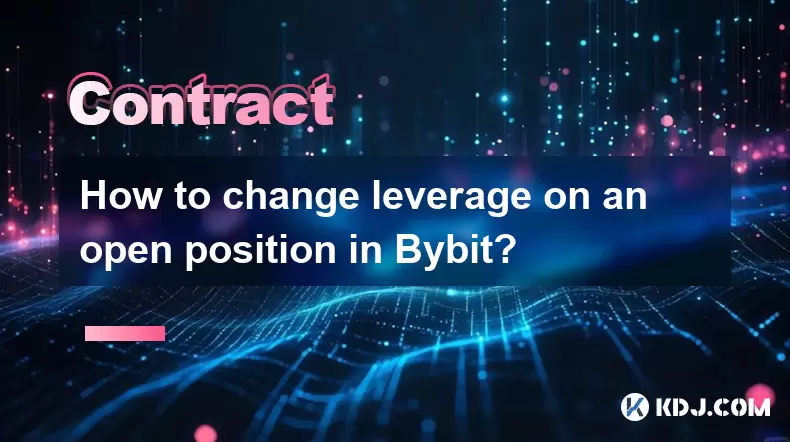-
 Bitcoin
Bitcoin $118800
1.58% -
 Ethereum
Ethereum $3746
0.77% -
 XRP
XRP $3.504
0.58% -
 Tether USDt
Tether USDt $1.000
0.01% -
 BNB
BNB $795.9
5.17% -
 Solana
Solana $202.3
1.89% -
 USDC
USDC $0.0000
0.02% -
 Dogecoin
Dogecoin $0.2660
0.42% -
 Cardano
Cardano $0.8851
0.64% -
 TRON
TRON $0.3168
2.24% -
 Hyperliquid
Hyperliquid $45.60
3.36% -
 Stellar
Stellar $0.4696
2.37% -
 Sui
Sui $3.964
0.86% -
 Chainlink
Chainlink $19.55
0.72% -
 Hedera
Hedera $0.2711
1.51% -
 Avalanche
Avalanche $25.71
0.02% -
 Bitcoin Cash
Bitcoin Cash $526.7
1.89% -
 Litecoin
Litecoin $120.5
4.40% -
 Shiba Inu
Shiba Inu $0.00001524
0.31% -
 UNUS SED LEO
UNUS SED LEO $8.994
0.01% -
 Toncoin
Toncoin $3.290
0.71% -
 Polkadot
Polkadot $4.498
2.49% -
 Uniswap
Uniswap $10.74
1.57% -
 Ethena USDe
Ethena USDe $1.001
0.01% -
 Monero
Monero $324.0
2.53% -
 Pepe
Pepe $0.00001410
0.25% -
 Bitget Token
Bitget Token $4.825
-0.16% -
 Dai
Dai $0.9999
0.01% -
 Aave
Aave $307.9
-2.13% -
 Bittensor
Bittensor $447.8
1.32%
How to change leverage on an open position in Bybit?
On Bybit, you can adjust leverage on open isolated-margin positions, impacting liquidation price and margin—but not entry price or size.
Jul 23, 2025 at 12:00 am

Understanding Leverage in Bybit Trading
Leverage allows traders to amplify their market exposure by borrowing funds from the exchange. On Bybit, leverage is a core feature for both perpetual contracts and futures trading, enabling users to open larger positions than their initial margin would normally allow. However, managing leverage dynamically—especially on an open position—is crucial for risk control and capital efficiency. Many traders assume that once a position is opened, the leverage is fixed. This is not accurate on Bybit. The platform supports adjusting leverage even after entering a trade, which provides flexibility depending on market conditions or personal strategy adjustments.
It's important to distinguish between cross-margin and isolated-margin modes when modifying leverage. In isolated-margin mode, changing leverage directly affects the allocated margin and can influence liquidation prices. In cross-margin mode, leverage cannot be adjusted directly on an open position because the system uses the entire available balance as collateral. Therefore, only isolated-margin positions support leverage modification post-entry. Ensuring your position is in isolated-margin mode is the foundational step before attempting any leverage change.
Accessing Your Open Position on Bybit
To modify leverage on an existing trade, you must first locate the active position within the Bybit interface. Log in to your Bybit account and navigate to the Contracts section. Select the appropriate market, such as USDT Perpetual or Inverse Contracts, depending on the asset you're trading. Once in the trading interface, look at the Positions tab located beneath the main price chart. This panel displays all currently held positions.
In the Positions table, each open trade shows key details: symbol, size, entry price, leverage, margin mode, and unrealized PnL. Identify the specific position you wish to adjust. Next to the leverage value, you will notice an editable field or a pencil icon—this indicates that leverage adjustment is possible. Clicking this triggers the leverage modification interface. If no editing option appears, confirm that the position is in isolated margin mode, as cross-margin positions do not permit this action.
Steps to Modify Leverage on an Isolated Position
Adjusting leverage on an open isolated position involves several precise steps. Ensure you are on the correct trading pair and that your position is active. Follow these actions:
- Navigate to the Positions tab and locate your isolated-margin trade
- Find the leverage display next to your position details
- Click the edit icon (pencil) or directly on the leverage number
- A pop-up slider or input box will appear, allowing you to enter a new leverage value
- Enter the desired leverage level within the allowable range for that symbol
- Confirm the change by clicking Confirm or Set
The allowable leverage range varies by cryptocurrency and contract type. For example, BTC/USDT perpetuals may allow up to 100x, while smaller altcoins might cap at 50x or lower. Attempting to set leverage beyond the permitted limit will result in an error. After confirmation, the system recalculates your position margin and updates the liquidation price accordingly. You’ll see real-time changes reflected in the position details immediately.
Impact of Changing Leverage on Risk Metrics
Altering leverage on an open position has direct consequences on your margin utilization and liquidation threshold. When you increase leverage, the required margin decreases proportionally, freeing up capital but bringing the liquidation price closer to the current market price. Conversely, decreasing leverage increases the margin requirement, which may pull more funds from your available balance but pushes the liquidation price further away, reducing immediate risk.
For example, if you hold a long position in ETH/USDT with 10x leverage and switch to 25x, the system reduces the margin allocated to that trade. While this improves capital efficiency, it also means smaller adverse price movements could trigger liquidation. Always review the updated liquidation price and maintenance margin after making a change. Bybit provides a live preview of these metrics during the adjustment process, enabling informed decisions before finalizing.
Mobile App Procedure for Leverage Adjustment
Bybit’s mobile application offers full functionality for leverage modification on open positions. Launch the Bybit app and log into your account. Tap on Trade and select the relevant contract market. Switch to the Positions view, typically accessible via a tab at the bottom of the screen. Locate your isolated-margin position from the list.
Next to the displayed leverage ratio, tap the edit button (often represented by a pencil). A slider or numeric keypad will appear. Input the new leverage value within the allowed limits. The app will show updated margin and liquidation estimates instantly. Confirm by tapping Apply or Set Leverage. The change takes effect immediately, and the position details refresh to reflect the new settings.
Ensure your internet connection is stable during this process to prevent incomplete requests. Mobile users should also enable two-factor authentication (2FA) to secure their accounts, especially when making sensitive margin adjustments.
Common Errors and Troubleshooting
Users may encounter issues when attempting to change leverage. One frequent problem is the "Cannot modify leverage" message. This typically occurs when the position is in cross-margin mode. Switch to isolated margin before proceeding. Another issue arises when entering invalid leverage values—always ensure the number falls within the symbol’s allowed range.
If the interface does not respond, try refreshing the page or restarting the app. Browser extensions or ad blockers may interfere with interactive elements; disable them temporarily. For API users, leverage adjustments on open positions must be handled through the private endpoint /private/linear/position/set-leverage with proper authentication. Incorrect API calls or missing parameters will return errors.
Frequently Asked Questions
Can I change leverage on a cross-margin position?
No, leverage cannot be modified on cross-margin positions. Only isolated-margin positions support leverage adjustments. To change leverage, you must first switch the margin mode to isolated, though this action may require closing the position depending on platform rules.
Does changing leverage affect my entry price or position size?
No, adjusting leverage does not alter your entry price or contract quantity. It only modifies the margin allocation and recalculates the liquidation price and required maintenance margin.
Will changing leverage trigger a margin call or liquidation?
The act of changing leverage itself does not trigger liquidation. However, increasing leverage brings the liquidation price closer to the market price, raising the risk of liquidation if the market moves against you shortly after.
Is there a fee for changing leverage on Bybit?
No, Bybit does not charge any fees for modifying leverage on open positions. The adjustment is a free operational feature designed to enhance user control over risk management.
Disclaimer:info@kdj.com
The information provided is not trading advice. kdj.com does not assume any responsibility for any investments made based on the information provided in this article. Cryptocurrencies are highly volatile and it is highly recommended that you invest with caution after thorough research!
If you believe that the content used on this website infringes your copyright, please contact us immediately (info@kdj.com) and we will delete it promptly.
- Arca, PENDLE, and Kraken: Navigating DeFi's Institutional Currents
- 2025-07-23 11:10:11
- Bitcoin Betting, Small Investors, and the Specter of Dollar Collapse: A New Yorker's Take
- 2025-07-23 08:50:11
- Altcoins, Binance Futures, and Bitcoin Rotation: Catching the Crypto Wave
- 2025-07-23 09:10:11
- Dianne Smith, a Spanish Doubloon, and JM Mason: A Pike County Tale
- 2025-07-23 08:30:13
- Bitcoin, Investor, and Computer Blunders: A $95 Million Lesson
- 2025-07-23 09:30:12
- Bitcoin Bulls Eye $115,000, Poised for a $120,000+ Breakout?
- 2025-07-23 08:50:11
Related knowledge

Why is my Bitstamp futures position being liquidated?
Jul 23,2025 at 11:08am
Understanding Futures Liquidation on BitstampFutures trading on Bitstamp involves borrowing funds to open leveraged positions, which amplifies both po...

How to find your Bitstamp futures trade history?
Jul 23,2025 at 08:07am
Understanding Bitstamp and Futures Trading AvailabilityAs of the current state of Bitstamp’s service offerings, it is critical to clarify that Bitstam...

How to trade ETH perpetuals on Bitstamp?
Jul 23,2025 at 03:28am
Understanding ETH Perpetual ContractsETH perpetual contracts are derivative products that allow traders to speculate on the price of Ethereum without ...

How to hedge with Bitstamp futures?
Jul 23,2025 at 02:00am
Understanding Bitstamp Futures ContractsBitstamp futures are financial derivatives that allow traders to speculate on or hedge against the future pric...

What happens during a Bitstamp margin call?
Jul 23,2025 at 07:42am
Understanding Bitstamp Margin CallsA Bitstamp margin call occurs when the value of a trader’s equity in a margin position falls below the required mai...

What is maintenance margin on Bitstamp?
Jul 23,2025 at 10:08am
Understanding Maintenance Margin on BitstampMaintenance margin on Bitstamp refers to the minimum amount of equity that must be maintained in your marg...

Why is my Bitstamp futures position being liquidated?
Jul 23,2025 at 11:08am
Understanding Futures Liquidation on BitstampFutures trading on Bitstamp involves borrowing funds to open leveraged positions, which amplifies both po...

How to find your Bitstamp futures trade history?
Jul 23,2025 at 08:07am
Understanding Bitstamp and Futures Trading AvailabilityAs of the current state of Bitstamp’s service offerings, it is critical to clarify that Bitstam...

How to trade ETH perpetuals on Bitstamp?
Jul 23,2025 at 03:28am
Understanding ETH Perpetual ContractsETH perpetual contracts are derivative products that allow traders to speculate on the price of Ethereum without ...

How to hedge with Bitstamp futures?
Jul 23,2025 at 02:00am
Understanding Bitstamp Futures ContractsBitstamp futures are financial derivatives that allow traders to speculate on or hedge against the future pric...

What happens during a Bitstamp margin call?
Jul 23,2025 at 07:42am
Understanding Bitstamp Margin CallsA Bitstamp margin call occurs when the value of a trader’s equity in a margin position falls below the required mai...

What is maintenance margin on Bitstamp?
Jul 23,2025 at 10:08am
Understanding Maintenance Margin on BitstampMaintenance margin on Bitstamp refers to the minimum amount of equity that must be maintained in your marg...
See all articles

























































































